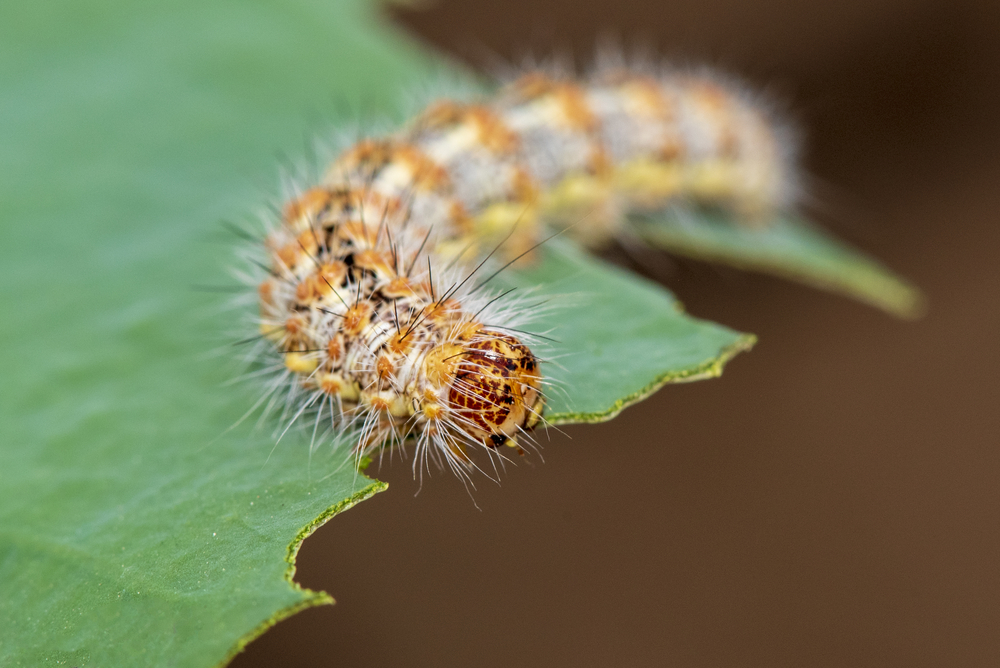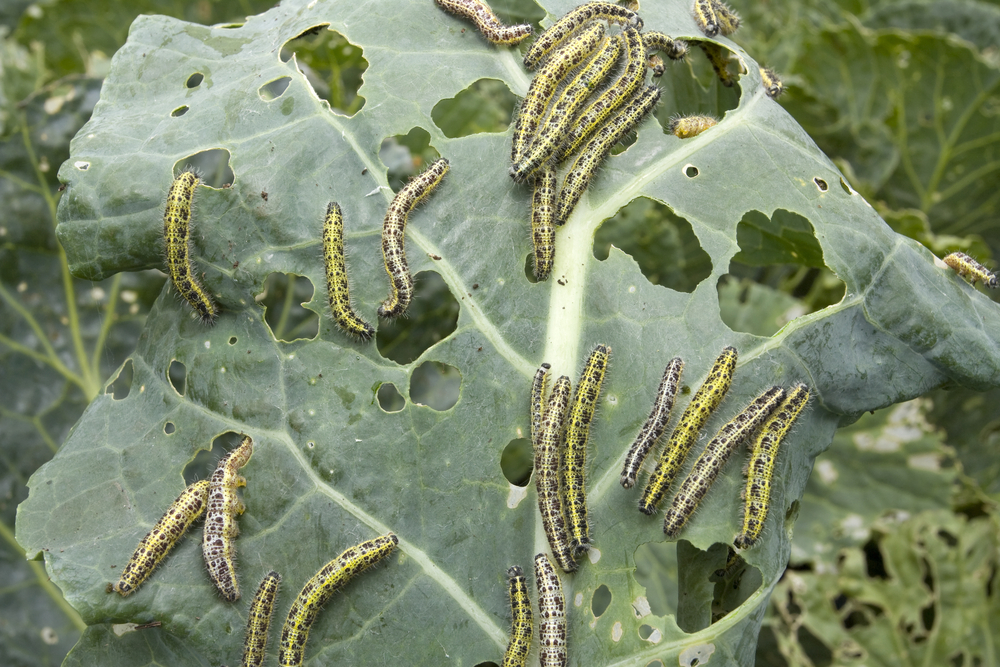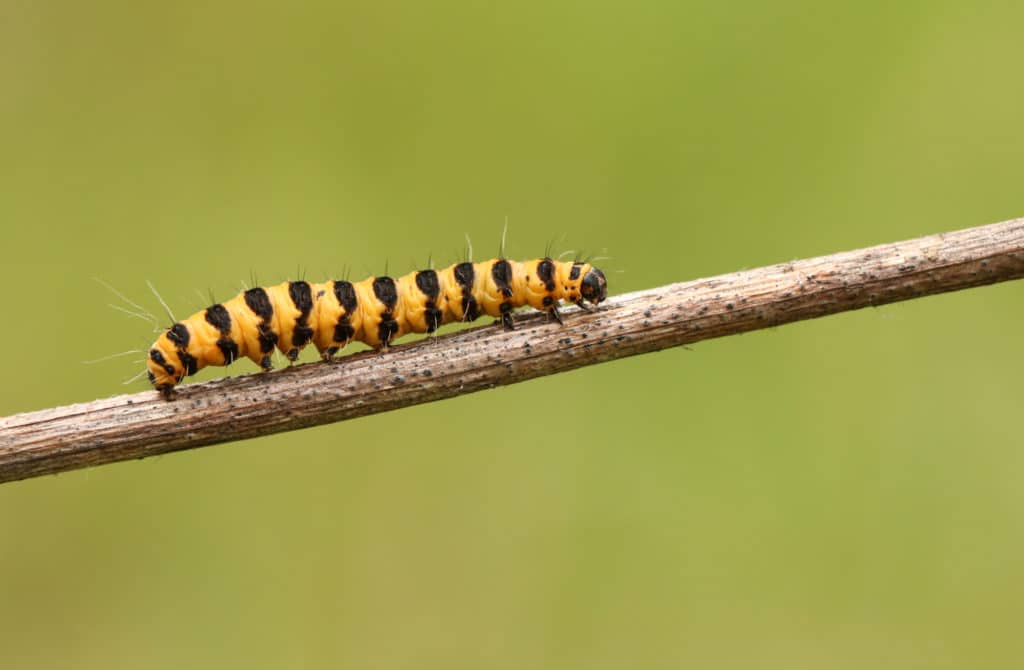Do you know the many fascinating species of caterpillars that call the UK home? From tiny, brightly-coloured moths to large and fuzzy butterflies, these remarkable insects can be found in a variety of habitats. In this article, we will explore caterpillars from identification to life cycle and food sources to conservation efforts. We’ll also look at how predators interact with them as well as gear designed for research and observation. Join us on an exciting journey into the world of caterpillars!
Identifying Caterpillars

Caterpillars are the larval stage of butterflies and moths, making them a common sight in gardens and parks. Identifying caterpillars can be tricky due to their wide variety of shapes, sizes, colours, and patterns. However, some key features can help you distinguish between different species.
Size is one of the most important factors when it comes to identifying caterpillars. Some species may measure just a few millimetres while others can reach up to 10 cm in length! Colour is also an important factor; many caterpillars have bright stripes or spots on their bodies which make them easy to spot amongst the foliage.
Habitat is another helpful indicator when trying to identify a particular species of caterpillar. For example, if you find a large green caterpillar with yellow stripes living in your garden, then it’s likely that this is the larvae of either a hawk moth or an elephant hawk moth – both found commonly throughout Britain’s gardens.
The physical characteristics of each species vary greatly too; some have hairy bodies, while others may appear smooth and shiny like plasticine. Many will also feature spines along their backs which act as defence mechanisms against predators such as birds or lizards. Others may even possess false eyespots, which confuse potential attackers into thinking they are larger than they actually are.
Finally, certain types of caterpillars will feed exclusively on specific plants. Therefore, if you know what type of plant your specimen was feeding on then, this could help narrow down its identity further still. All these factors combined should give you enough information to confidently identify any caterpillar.
By identifying caterpillars, you can gain a better understanding of their life cycle and the habitats they inhabit. Next, let’s explore the various stages in a caterpillar’s life cycle.
Caterpillar Life Cycle

The life cycle of a caterpillar begins with an egg. Caterpillars lay their eggs on the underside of leaves, usually in clusters or rows. The eggs are very small and can be difficult to spot unless you look closely. Once the eggs hatch, tiny larvae emerge that feed on the surrounding foliage until they reach maturity.
As caterpillars grow, they shed their skin several times as they moult into larger sizes. During this process, they also develop more complex body structures, such as legs and antennae. As caterpillars continue to eat and grow, some species may form cocoons or chrysalises around themselves for protection, while others remain exposed during this stage of development.
When fully grown, many species will spin a silken thread from which it hangs upside down while its body undergoes dramatic changes into an adult butterfly or moth form, known as metamorphosis. After emerging from its pupa state (cocoon), the newly formed adult insect is ready to fly off in search of food and mates.
The life cycle of a caterpillar is an amazing process, from egg to adult moth or butterfly. Now let’s explore the food sources that sustain them through their journey.
Caterpillars and Food

Adapted For Feasting
Most caterpillars have specialised mouthparts that allow them to chew through tough plant material with ease. These mouthparts are known as mandibles, and they come in various shapes and sizes depending on the type of food the caterpillar eats. For example, some species have sharp mandibles for cutting through hard plant tissue, while others have more rounded ones for grinding softer materials like fruit pulp or lichen spores.
When searching for food sources, caterpillars rely heavily upon their sense of smell to locate potential meals nearby. They use chemoreceptors located near their antennae to detect chemicals released by plants when they’re under attack from pests such as other insects or disease-causing organisms like bacteria or fungi. This helps them identify which plants may be worth eating before they start munching away.
In addition to relying upon their sense of smell to find food sources, some species also use visual cues such as colour patterns or shapes associated with certain types of vegetation that could provide sustenance for them if consumed properly. Other species may employ tactile methods such as feeling around different surfaces until something edible is discovered underneath it all.
Caterpillar Diet
Caterpillars are voracious eaters and can consume large amounts of food in a short period of time. They feed on the leaves, stems, flowers, fruits, and even bark of plants depending on their species. Some caterpillars will also feed on lichens or fungi found growing on trees or rocks.
Caterpillars typically prefer fresh foliage over old growth, but this isn’t always the case; some will scavenge whatever is available to survive during times when resources are scarce due to drought conditions or extreme weather events like floods that can wipe out entire populations at once.
Finally, many species migrate long distances in search of new feeding grounds where there is an abundance of suitable vegetation waiting for them. This process is known as “host shifting” and allows these creatures access to areas where competition among other hungry mouths might be less intense than closer locales would offer up otherwise.
Caterpillar Predators
Caterpillars are a favourite food source for many predators, including birds, mammals, and other insects. Let’s take a closer look:
- Birds such as tits, robins, crows, jays, and chickadees will eat caterpillars when they can find them. Other avian predators include hawks and owls.
- Mammals like squirrels and chipmunks also feed on caterpillars when the opportunity arises.
- Wasps, damselflies and even flies may prey upon them. Many species of wasps specialise in hunting caterpillars; these wasps paralyse their victims with venom before dragging them back to their nests to feed their young larvae or eggs laid directly onto the paralysed body of the victim (a process known as “parasitoidism”).
- Dragonflies often snatch up unsuspecting individuals from foliage during flight manoeuvres known as “hawking” or “hovering” over an area looking for prey items to catch mid-air.
- Ants also hunt down individual caterpillar specimens or raid entire colonies if they find one.
- Beetles such as ladybirds will consume both adult moths/butterflies and their immature forms.
Interesting Facts

Caterpillars have unique adaptations to help them survive in their environment. From their unique physical features to the fascinating metamorphosis process, caterpillars offer a wealth of interesting facts. Let’s take a look at some in more detail:
- Many species of caterpillars have evolved to mimic the colours and patterns of other animals, such as snakes or birds, which helps them avoid predators. This is known as camouflage.
- Some caterpillars also possess spines on their bodies which can make them difficult for predators to swallow.
- Some species may secrete a foul-smelling substance when threatened, making it easier for them to escape from danger.
- Many caterpillars feed on plants and use special mouthparts called mandibles to chew through leaves and stems. Some even eat wood!
- Some caterpillars have evolved the ability to digest toxic substances found in certain plants so they can safely consume these foods without being harmed by the toxins within them.
- When it comes time for a caterpillar to pupate into an adult butterfly or moth, they often seek out sheltered areas where they can hang upside down while forming their cocoon or chrysalis before emerging as adults after several weeks or months depending on the species involved.
Conservation

Conserving caterpillars is an important part of maintaining a healthy ecosystem. There are several ways to help protect these creatures, including creating habitats for them and avoiding pesticides. Let’s take a closer look.
Creating Habitats
Creating a habitat for caterpillars can be as simple as leaving some grassy areas undisturbed or planting native plants that attract butterflies and moths. This will provide food sources for caterpillars, such as leaves, flowers, and fruits. Additionally, providing shelter from wind and rain can also help keep them safe from predators while they feed and grow.
Avoiding Pesticides
The use of chemical pesticides should be avoided when possible due to their harmful effects on both caterpillars and other beneficial insects like bees. If necessary, look into using natural alternatives such as neem oil or diatomaceous earth instead of chemical-based products.
Gardening Practices
Gardening practices that promote biodiversity can also benefit local populations of caterpillars by providing more food sources for them to feed on throughout the year. Planting a variety of flowering plants will attract different species of butterflies, which lay eggs that hatch into larvae (caterpillars). Avoid tilling soil too deeply since this disrupts pupae (the stage between larva/caterpillar and adult butterfly) living underground, who may not survive if disturbed too much during this vulnerable period in their life cycle.
Conclusion
In conclusion, caterpillars are an important part of the wildlife ecosystem and require careful observation and conservation. Understanding their life cycle, food sources, predators and identifying them is key to helping protect these species for future generations. With the right knowledge, anyone can help make a difference in preserving caterpillars.
Additional Resources

Ash is a contributing author who has been writing about wildlife for as long as he can remember. He has a vast knowledge of many different types of animals, from the tiniest shrews to the great whales that live in the deepest oceans.
